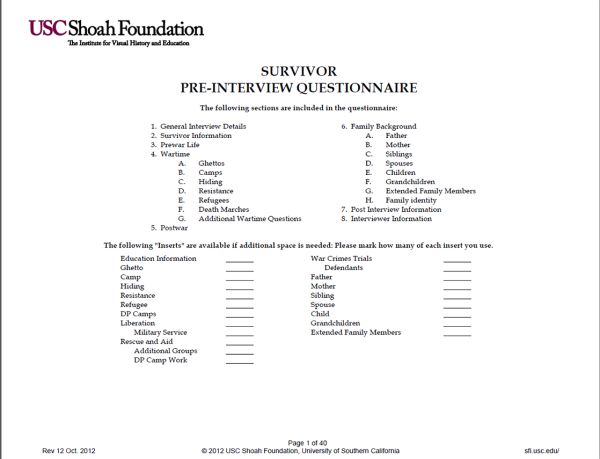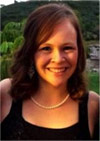Documenting Life Histories
The 53,000 testimonies in the Visual History Archive from the USC Shoah Foundation tell a complete personal history of life before, during and after the interviewee’s firsthand experience with genocide.
These testimonies are an invaluable resource for humanity, as in addition to their experience through some of the darkest chapters of human history; the testimonies also recount happy memories of childhood and successes in life including careers, children and grandchildren.
The testimonies were guided by a 40 pre-interview questionnaire (PIQ) that the USC Shoah Foundation developed. A week before giving testimony, the interviewer and interviewee would review the information on the PIQ that covered detailed biographical information: birthplace, family background and names, religious and other affiliations, defining wartime experiences, and the who, what, where and when of the person’s life up to the interview. The PIQ’s most essential purpose was to make sure the outline of that life was covered, names recorded and correctly spelled.

The recent Newsweek article, The case for Interviewing the Very Old People in Your Life, encourages recording audio or video interviews of elderly loved ones who grew up in a world before the Internet, smartphones and even television. Unlike the young generations today, our older family members do not have a digital footprint that will live on. Much like what was done in the Visual History Archive, the author advocates recording an interview to preserve the memory of an older loved one, not only for current family members, but people not even born yet. It also gives people the chance to have an intimate conversation with a grandparent, uncle, aunt or even a parent about their earlier years and all the momentous and historical moments they witnessed.
Here at the USC Shoah Foundation I often hear from family members of survivors who are so appreciative to have copies of their loved ones testimonies. A daughter of a survivor once told me, “Even though it can be hard to listen to my mom’s story, it is so good to hear her voice again.”
If the Newsweek article inspires you to conduct your own audiovisual interview of a loved one, the PIQ and our other resources could help you frame your interview. Also keep in mind when conducting an interview:
- Prepare the room – Have a glass of water available and tissues available for you and the interviewee.
- Lighting – Test the lighting of the room before you start tapping the interview. Make sure there is enough light that you can see the interviewee and not too much where the light is blinding.
- Sound – Recording the interviewer inside is best since there will be no outside noise and make sure to turn off any background noise, like TV’s, radio and computers.
- Listen – Make sure when you ask a question give the interviewee enough time to respond and let them finish their thought. You don’t want to interrupt their story.
We hope our 20 years of experience of documenting life histories will be of assistance when you conduct your own family interviews.
